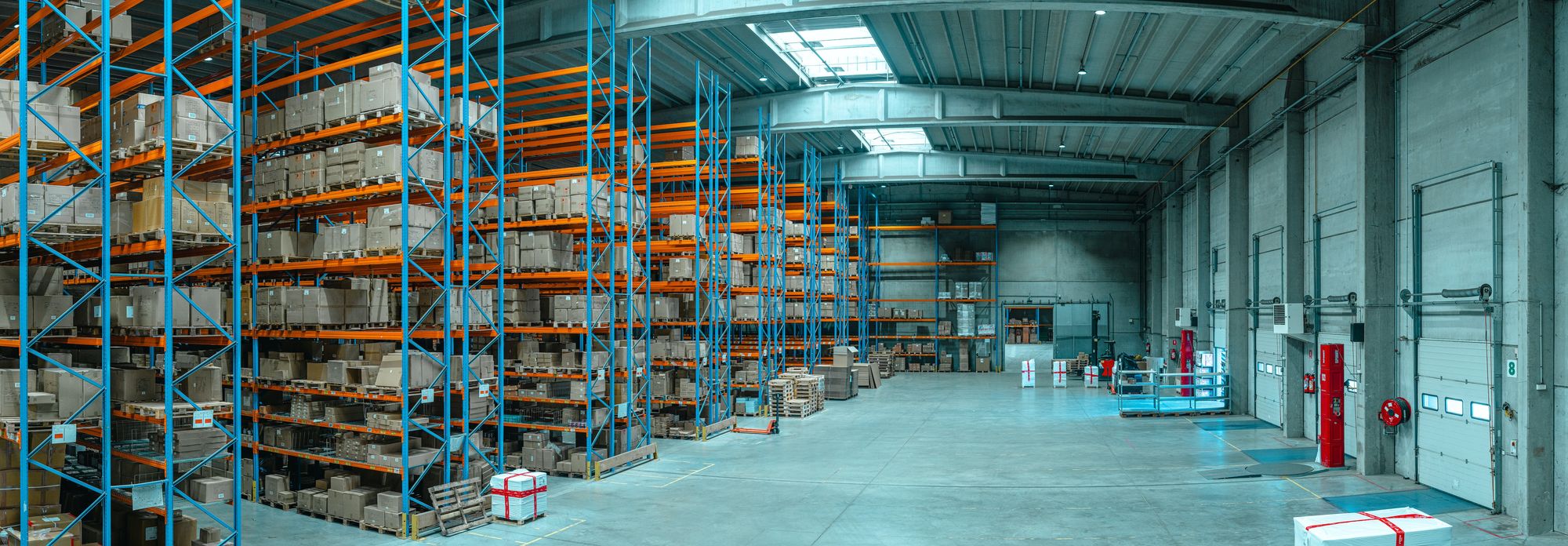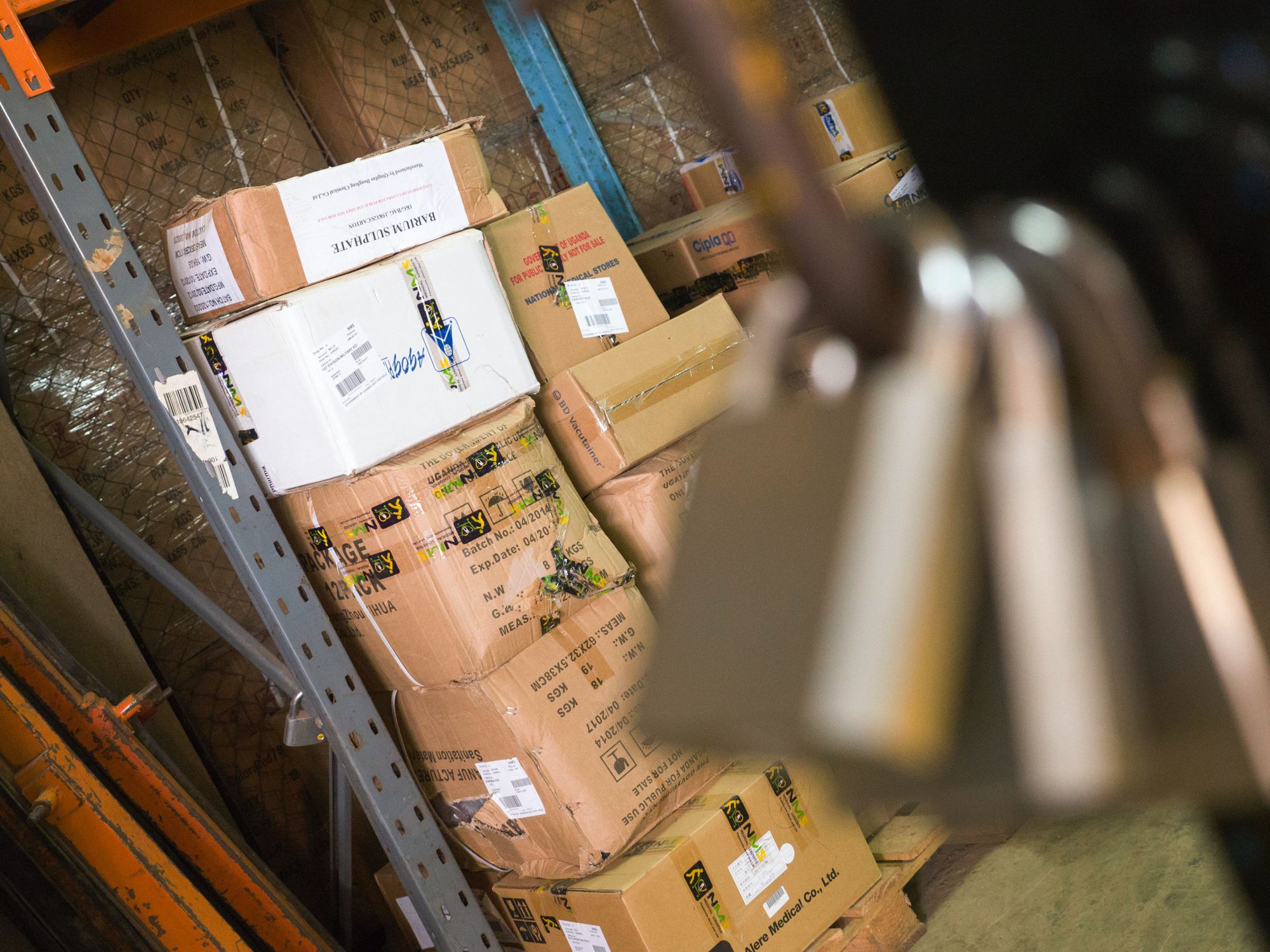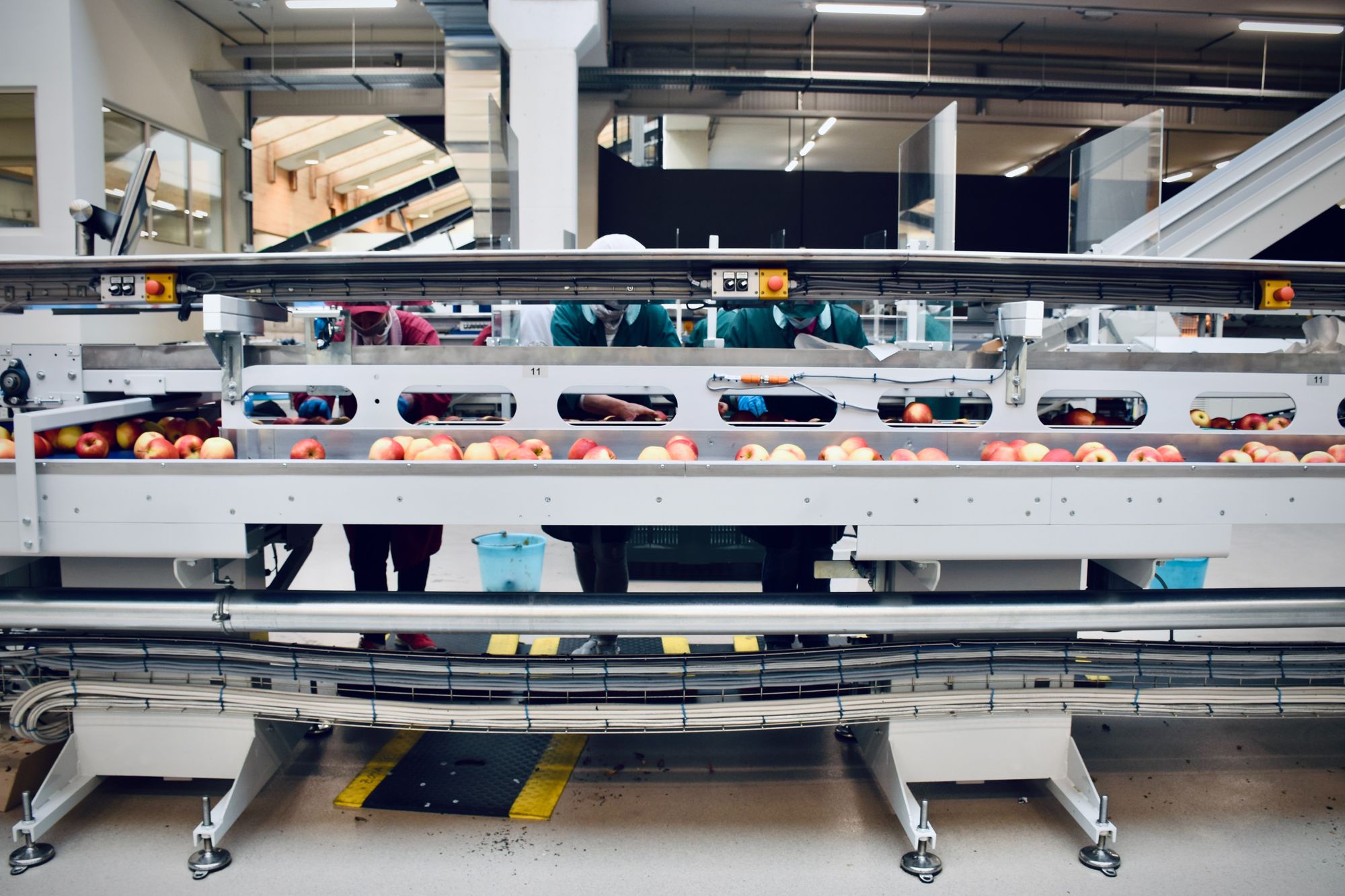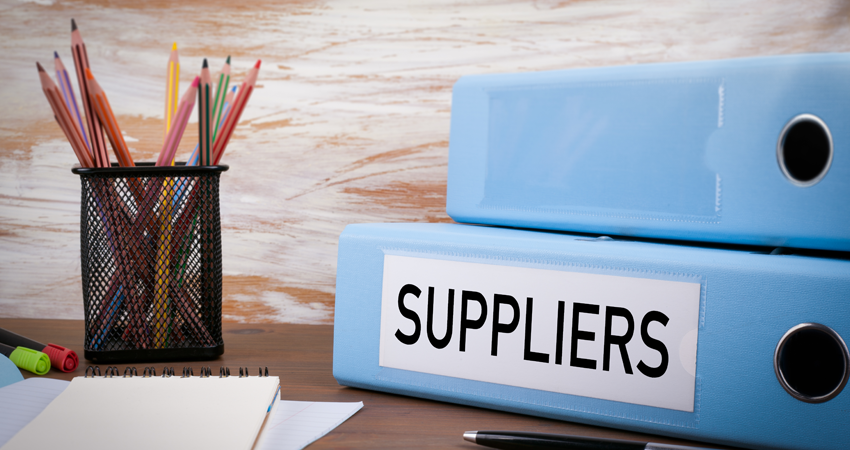According to a report by the International Trademark Association (INTA), the estimated value of counterfeit goods in the US market was $45.2 billion in 2019. This highlights the importance of ensuring the authenticity of products in the supply chain.
To address these challenges, companies are exploring innovative solutions, such as blockchain, to enhance the transparency and traceability of their supply chain.
Supply chain provenance refers to the ability to trace the origin and movement of a product through the supply chain. It is becoming increasingly important in today's globalized and complex supply chain environment, where the risk of counterfeit and fraudulent products entering the market is a growing concern.
Companies implementing a comprehensive and well-designed supply chain provenance strategy can reduce the risk of fraudulent and unapproved products entering the market and build trust and confidence with their customers.
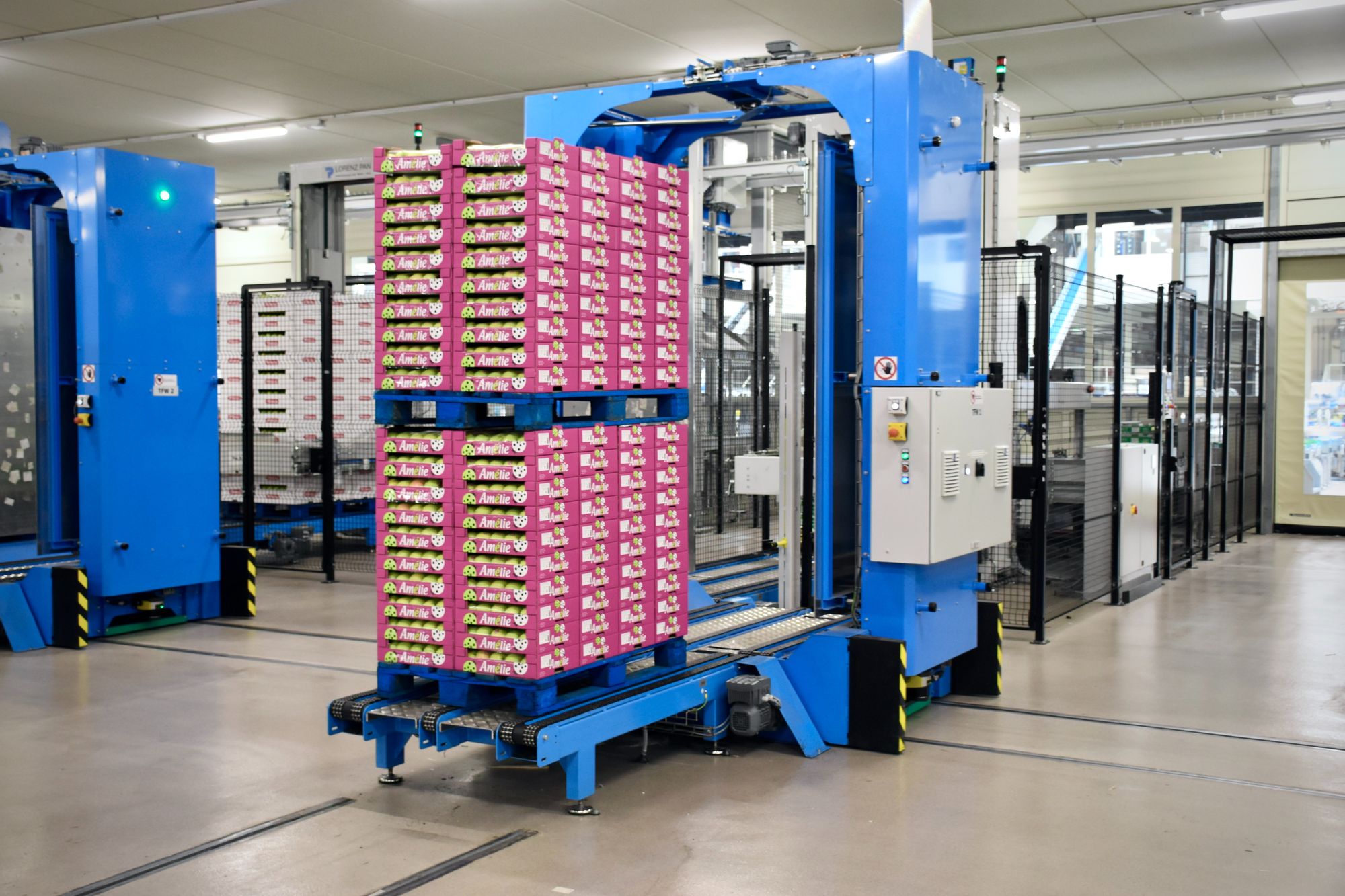
In this article, we will explore the key elements of a successful supply chain provenance strategy and the role that technology, such as blockchain, can play in enhancing traceability and transparency.
Here's what we shall cover in this post:
- What is Supply Chain Provenance?
- Key Elements of Supply Chain
- 5 Elements of Supply Chain Provenance
- Common Types of Fraudulent and Unapproved Products
- Benefits of Supply Chain Provenance
- Blockchain-Enabled Supply Chain Provenance Framework
- How Deskera Can Assist You?
- Conclusion
- Key Takeaways
What is Supply Chain Provenance?
Supply Chain Provenance includes all the information about the product, including the materials used, manufacturing process, transportation, and storage.
- The goal of supply chain provenance is to provide transparency and accountability in the supply chain to ensure that the product is of high quality and meets specific standards.
- This information is essential for both the manufacturer and the customer. For the manufacturer, it helps to monitor and improve their supply chain processes, while for the customer, it assures the product's origin and quality.
- Supply chain provenance is becoming increasingly important due to the growing concern about sustainability, ethical sourcing, and the traceability of products.
- Technology, such as blockchain and smart contracts, is being used to improve supply chain provenance by providing secure and tamper-proof records of all transactions in the supply chain.
- By clearly understanding the product's journey from the beginning to the end, both the manufacturer and the customer can make informed decisions, leading to improved quality and trust in the supply chain.
Key Elements of Supply Chain
Flexibility
Flexibility in the supply chain refers to the ability to adapt to changing circumstances, whether internal or external. This includes the ability to adjust to changes in demand, the introduction of new products, or disruptions to the supply chain.
A flexible supply chain is essential in today's fast-paced business environment, where markets and customer needs can change rapidly. For example, a sudden increase in demand for a product can be met quickly and efficiently if the supply chain is flexible, while a rigid supply chain may struggle to cope.
Measurement of Performance
Measuring the performance of the supply chain is crucial in understanding how well the supply chain is functioning and in identifying areas that need improvement. This can include delivery times, product quality, and cost.
Regular monitoring and measurement of the supply chain performance help companies identify any issues and make necessary changes. For example, if delivery times are longer than expected, the company may need to review its transportation processes and make changes to improve efficiency.
Alignment
Alignment in the supply chain refers to ensuring that all parties in the supply chain are working towards a common goal. This involves ensuring that suppliers, manufacturers, and customers are all working together to achieve the same objectives, such as delivering high-quality products on time and at a reasonable cost.
Effective alignment in the supply chain also involves communication and collaboration between all parties. This can be achieved through regular meetings and sharing information, such as demand forecasts and delivery schedules.
Consideration
Supply chain consideration refers to carefully evaluating all factors impacting the supply chain, including suppliers, customers, and internal processes. This process is crucial in ensuring the smooth and efficient flow of products from the manufacturer to the end consumer.
Consideration also involves considering the needs of all stakeholders in the supply chain, including suppliers, customers, and employees. For example, a supplier may need specific materials or processes to be in place to manufacture a product efficiently. At the same time, a customer may require a product to be delivered a certain way.
Technology
Technology plays an increasingly important role in the supply chain, providing new and improved ways of managing and tracking products. From the use of software to manage the supply chain to the implementation of automated processes, technology is helping companies to improve efficiency and reduce costs.
For example, blockchain technology in the supply chain provides a secure and tamper-proof record of all transactions, ensuring that the supply chain is transparent and accountable.
Additionally, using sensors and other IoT devices in the supply chain can provide real-time information about the location and condition of products, enabling companies to respond quickly to any issues that may arise.
5 Elements of Supply Chain Provenance
Serialization
Serialization refers to the unique identification of each product in the supply chain through a unique identifier such as a serial number or barcode. This unique identifier is used to track a product from the point of manufacture to the end consumer and to ensure that it is of high quality.
Serialization is vital in ensuring the supply chain's transparency and accountability and ensuring that a product is authentic.
Product Characteristics
Product characteristics refer to a product's physical and functional attributes, such as size, shape, color, and weight. These characteristics are essential in ensuring that a product is of high quality and meets certain standards, and they also help to identify a product in the supply chain.
To ensure that product characteristics are accurately recorded, companies can use technology such as barcoding, RFID tags, and sensors to collect and store data about a product. This data can then be used to track the product throughout the supply chain and to ensure that it meets the desired standards.
Markings
Markings refer to the identification marks placed on a product, such as a barcode or serial number. These markings are used to identify a product in the supply chain and to track its journey from the point of manufacture to the end consumer.
Markings are important in ensuring the supply chain's transparency and accountability and ensuring that a product is of high quality. By using markings, companies can track a product from the point of manufacture to the end consumer and ensure that it meets the desired standards.
Product Data
Product data refers to all the information associated with a product, including its origin, manufacturing process, and transportation. This data is important in providing transparency and accountability in the supply chain and ensuring that a product is of high quality.
Product data can be collected using technology such as blockchain and smart contracts, which provide a secure and tamper-proof record of all transactions in the supply chain.
This data can then be used to track a product from the point of manufacture to the end consumer and to ensure that it meets the desired standards.
Tamper Protection
Tamper protection refers to measures put in place to protect a product from being altered or damaged during transportation and storage. This can include physical protection, such as packaging, or technological protection, such as sensors that detect temperature or pressure changes.
Tamper protection is important in ensuring a product's quality and integrity and providing transparency and accountability in the supply chain.
By using tamper protection, companies can ensure that a product arrives at its destination in the same condition as when it was manufactured and that its quality and authenticity are not compromised.
Common Types of Fraudulent and Unapproved Products
Companies must be aware of these common fraudulent and unapproved products and implement measures to prevent and detect them in the supply chain. Protecting against these risks is crucial for maintaining a company's reputation, financial performance, and consumer trust.
Counterfeit Products: Counterfeit products are fake versions of genuine products made to deceive consumers. They are often made with low-quality materials and do not meet the same standards as genuine products, posing potential health and safety risks.
To protect against counterfeits, companies need to implement measures to prevent them from entering the supply chain and detect them when they do.
Gray Market Products: Gray market products are genuine products sold outside the approved distribution channels, often at a lower price. These products may not have the same warranty and support as those sold through authorized channels, and they can disrupt the supply chain and harm a company's revenue.
Diversion Products: Diversion products are genuine products meant for a different market but sold in another. This can lead to a lack of local support and language differences, making it important for companies to monitor and control the distribution of their products.
Overrun Products: Overrun products are surplus goods produced in excess of what was originally ordered. They are often sold at a lower price and can compete with the original product, causing harm to the original brand and reputation.
Refurbished Products: Refurbished products are used goods that have been restored to a like-new condition. While refurbished products can offer cost savings for consumers, they may not have the same warranty or quality as brand-new products, and companies need to clearly communicate the difference to protect their brand.
Defective Products: Defective products are goods that do not function as intended and may pose a safety risk. Companies need to implement quality control measures to prevent defective products from entering the supply chain and have processes in place for handling defective products once they are discovered.
Stolen Products: Stolen products are goods that have been taken without permission. These products can pose a risk to consumers as they may not have been handled or stored properly and can harm a company's reputation and financial performance.
Tampered Products: Tampered products are goods that have been altered in some way, potentially posing a risk to consumers. Companies need to have measures to detect and prevent tamperings, such as tamper-evident packaging and product serialization.
Benefits of Supply Chain Provenance
Supply chain provenance can offer a range of benefits to companies. Implementing a provenance system can help companies to protect their reputation and financial performance and to build trust with their customers.
Improved Product Traceability
Supply chain provenance allows for tracking products from their origin to the final destination, providing a clear record of each step along the way.
This improved traceability helps to reduce the risk of counterfeit and fraudulent products entering the supply chain and can also help to identify any issues that may arise during production or distribution.
Increased Consumer Confidence
By providing a clear record of a product's journey through the supply chain, supply chain provenance can increase consumer confidence in the products they purchase.
This is particularly important in industries such as food and pharmaceuticals, where consumers are concerned about the safety and quality of products.
Better Brand Protection
Supply chain provenance can help companies protect their brand by reducing the risk of counterfeit and fraudulent products entering the market. This can help to maintain a company's reputation and financial performance and can also help to protect against legal and financial repercussions.
Improved Supply Chain Efficiency
By providing a clear record of a product's journey through the supply chain, supply chain provenance can help to improve supply chain efficiency. This can help to reduce the time and cost of tracking and tracing products and can also help to improve the accuracy of product inventory management.
Enhanced Sustainability
Supply chain provenance can also help companies improve their supply chain's sustainability. By providing a clear record of a product's origin, companies can better monitor the practices of their suppliers and ensure that they are following sustainable and ethical standards.
Better Compliance with Regulations
In industries such as pharmaceuticals and food, strict regulations are in place to ensure product safety and quality. Supply chain provenance can help companies better comply with these regulations by providing a clear record of a product's journey and ensuring that all steps meet regulatory standards.
Blockchain-Enabled Supply Chain Provenance Framework
A blockchain-enabled supply chain provenance framework provides an immutable record of a product's journey through the supply chain. This means that the information recorded on the blockchain cannot be altered, providing a tamper-proof and transparent record of a product's history.
Blockchain-based systems are decentralized, meaning the data is stored on multiple network nodes rather than in a central location. This helps to ensure the security and reliability of the information recorded on the blockchain.
- By using blockchain technology, companies can track the movement of products through the supply chain in real time.
- The decentralized nature of blockchain systems provides increased transparency in the supply chain, as all participants have access to the same information.
- Blockchain technology can be used to automate certain processes within the supply chain, such as contract execution and product tracking.
- A blockchain-enabled supply chain provenance framework can help reduce company costs by improving the transparency and efficiency of supply chain operations.
- A blockchain-enabled supply chain provenance framework can increase consumer confidence in the products they purchase by providing a clear record of a product's journey through the supply chain.
How Deskera Can Assist You?
Deskera ERP is a comprehensive system that allows you to maintain inventory, manage suppliers, and track supply chain activity in real-time, as well as streamline a variety of other corporate operations.

Deskera ERP and MRP system can help you:
- Manage production plans
- Maintain Bill of Materials
- Generate detailed reports
- Create a custom dashboard
Deskera Books enables you to manage your accounts and finances more effectively. Maintain sound accounting practices by automating accounting operations such as billing, invoicing, and payment processing.
Deskera CRM is a strong solution that manages your sales and assists you in closing agreements quickly. It not only allows you to do critical duties such as lead generation via email, but it also provides you with a comprehensive view of your sales funnel.
Deskera People is a simple tool for taking control of your human resource management functions. The technology not only speeds up payroll processing but also allows you to manage all other activities such as overtime, benefits, bonuses, training programs, and much more. This is your chance to grow your business, increase earnings, and improve the efficiency of the entire production process.
Conclusion
A successful supply chain provenance strategy is essential for companies looking to ensure their products' authenticity, safety, and quality. A well-designed supply chain provenance framework can provide companies with a transparent and tamper-proof record of a product's journey through the supply chain, helping to reduce the risk of counterfeit and fraudulent products entering the market.
By implementing a strategy that incorporates elements such as product data, tamper protection, and serialization, companies can increase the transparency and efficiency of their supply chain operations.
Incorporating blockchain technology into the supply chain provenance framework can offer numerous benefits, such as enhanced traceability, improved transparency, and reduced costs. However, implementing a successful supply chain provenance strategy requires careful planning and coordination between all participants in the supply chain.
Key Takeaways
- A successful supply chain provenance strategy requires a combination of technology, process, and collaboration between all participants in the supply chain.
- Incorporating blockchain technology into the supply chain provenance framework can offer improved traceability, enhanced transparency, and reduced costs.
- Proper product data management is essential for a successful supply chain provenance strategy, including the accurate and timely recording of product information.
- A well-designed supply chain provenance framework provides a transparent and traceable record of a product's journey through the supply chain, reducing the risk of fraudulent and unapproved products.
- A successful supply chain provenance strategy requires collaboration and coordination between all participants in the supply chain.
Related Articles

